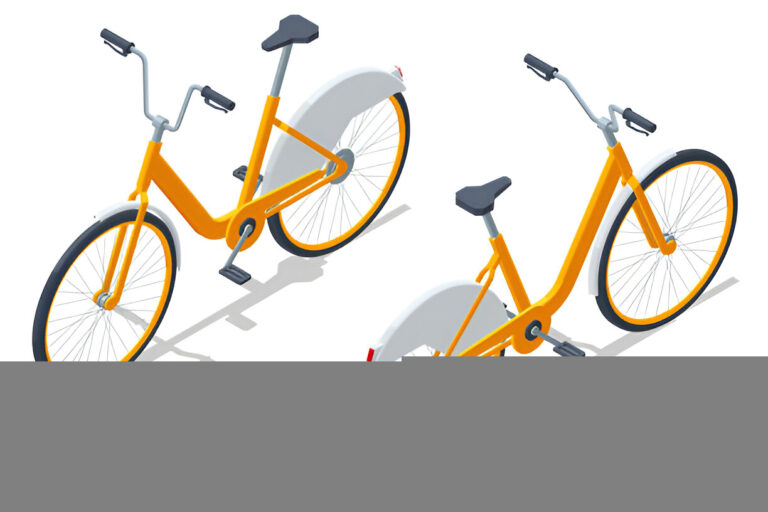The bicycle continues to evolve as a transportation solution, adapting to contemporary needs through specialized designs that address specific mobility challenges. This evolution has produced purpose-built machines that offer practical advantages for particular usage scenarios while maintaining the fundamental efficiency and enjoyment that make cycling appealing.
Urban Navigation: Designed for City Environments
The urban landscape presents unique challenges for cyclists, from navigating congested streets and storing bicycles in compact living spaces to arriving at destinations presentable for professional environments. Commuter bikes for city riding address these considerations through thoughtful design features specifically engineered for metropolitan environments.
Frame design for urban commuter bicycles prioritizes an upright riding position that enhances visibility in traffic while allowing riders to maintain awareness of their surroundings. This posture contrasts with the more aggressive, forward-leaning position found on performance-oriented road bikes, sacrificing some aerodynamic efficiency for comfort and situational awareness during stop-and-go urban riding.
Component selection focuses on reliability and low maintenance requirements rather than competitive performance metrics. Internal gear hubs protect shifting mechanisms from weather and debris while requiring minimal adjustment between service intervals. Belt drives eliminate the need for chain lubrication and resist the contamination that quickly degrades traditional drivetrains in all-weather urban use. Sealed bearing systems throughout the bicycle minimize service requirements while ensuring consistent performance regardless of conditions.
Weather consideration features prominently in these designs, with integrated fender mounting systems protecting riders from road spray during wet conditions. Many models incorporate built-in lighting systems powered by hub dynamos that eliminate battery management concerns while ensuring visibility to motorists in low-light conditions. These features transform cycling from a fair-weather activity into practical year-round transportation.
Cargo capacity represents another critical consideration for urban utility. Rack mounting points accommodate various carrying systems, from traditional panniers to specialized bags designed for laptop computers and professional attire. Some models feature frame-integrated carrying solutions that maintain the bicycle’s handling characteristics while providing substantial capacity for groceries, packages, or work essentials.
The riding experience these bicycles deliver prioritizes predictability and comfort over sportiness. Slightly wider tires at lower pressure absorb road vibration and navigate hazards like streetcar tracks with greater security. Stable steering geometry prevents the twitchy handling characteristics sometimes found in performance bikes, inspiring confidence in heavy traffic conditions where sudden maneuvers might be necessary.
Portable Mobility: Solutions for Multimodal Transportation
For those whose transportation needs extend beyond purely urban environments or include multimodal journeys, folding bikes for travel offer remarkable versatility through innovative engineering that transforms full-featured bicycles into compact packages. These sophisticated machines solve specific mobility challenges through creative design approaches that prioritize portability without excessively compromising riding experience.
The defining feature of these bicycles—their folding mechanism—represents a fascinating example of mechanical engineering applied to practical transportation. Various approaches exist, from mid-frame hinges that allow bicycles to fold in half to more complex systems that collapse frames in multiple dimensions simultaneously. The most sophisticated designs complete this transformation in under 15 seconds without tools, creating packages compact enough to fit under desks, in car trunks, or within standard luggage.
Wheel size historically represented a significant compromise for folding bicycles, with smaller diameters creating more compact folded packages at the expense of ride quality and efficiency. Modern designs have largely overcome these limitations through frame geometry optimization and component selection that delivers performance comparable to conventional bicycles despite smaller wheels. Some models even incorporate suspension systems that further compensate for reduced wheel diameter.
Component selection for quality folding bicycles focuses on durability and reliability while minimizing maintenance requirements—critical considerations for bicycles that may experience more handling in folded form and less routine care than conventional bikes. Sealed bearing systems, enclosed drivetrains, and high-strength connection points ensure these machines withstand the additional stresses associated with frequent folding and transportation.
The value proposition these bicycles offer extends beyond mere convenience. They enable transportation scenarios that would be impractical with conventional bicycles, from mixed-mode commuting that includes public transit segments to spontaneous recreational riding during business travel. Their compact storage footprint makes bicycle ownership practical for those with limited living space in urban apartments or condominiums.
Integration into Contemporary Lifestyles
Both urban commuter bicycles and folding bikes represent thoughtful responses to the practical challenges that sometimes prevent cycling adoption despite its many benefits. By addressing specific barriers through purpose-built design, these specialized machines make bicycle transportation accessible to those whose circumstances might otherwise preclude it.
The most successful implementations recognize that bicycles must integrate seamlessly into users’ broader lifestyles rather than requiring lifestyle adjustments to accommodate cycling. This user-centered approach focuses on solving real transportation problems through practical engineering rather than emphasizing performance metrics or technical specifications for their own sake.
As urban infrastructure continues evolving to better accommodate active transportation, these purpose-built bicycles offer practical solutions for diverse users seeking alternatives to automobile dependency or public transit limitations. Their specialized nature represents not a compromise but an optimization—bicycles refined for particular usage scenarios that deliver superior experiences within their intended contexts.
The future of practical cycling likely includes further specialization addressing specific transportation needs, from electric assistance that extends practical range to cargo-specific designs that replace utility vehicle functions. This evolution will continue making bicycle transportation relevant and accessible across increasingly diverse lifestyle contexts and usage scenarios.


